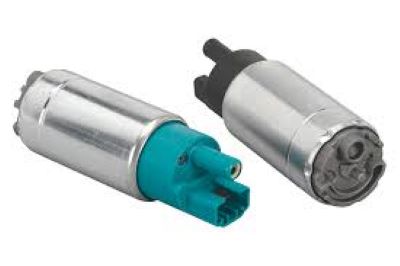This necessitates changes that allow more fuel to reach the engine under a higher pressure, which can offer performance improvements legacy in high-horsepower or tuned cars. Fuel pumps are rated by the amount of flow per hour they can make at a given pressure setting in liters per hour (LPH); most factory pumps offer between 80 to 130 LPH. These yield flow rates varying from 255 LPH to over 400LPH, depending on the performance required by the engine.
Claimed to be one of the most basic upgrades, it can upgrade the fuel pump directly. To put those words into more relatable terms, high-flow performance fuel pumps do exactly that, they flow a higher volume of fuel to the engine. A factory 130LPH unit may have worked, but you would suspect the owner added forced induction or other mods which required more fuel flow than the original pump could handle with new parts pumped out by a 255 LPH aftermarket replacement. The higher flow rates insure that the engine will get sufficient fuel at WOT and not run lean, which can contribute to engine failure.
A way to do that perfectly, is by adjusting the fuel pressure regulator. Fuel Pressure Regulator (FPR) — set between 30-80 psi; regulates pressure of fuel delivered to the injectors It raises the flow rate by pressuring more of that fuel to be forced out the injectors with increased pressure settings. This must be done carefully, though, because overdriving the injectors will lead to fuel system failure and ruin combustion.

Upgraded wiring can also improve the power to the fuel pump. The stock wiring systems are equipped to manage the current draw of factory pumps, but high-performance pumps likely will not receive enough voltage. In simpler terms, installing a fuel pump wiring kit or even going as far as a voltage booster are ways to add an aftermarket power supply that will keep the fuel pressure regulated which should improve your flow rates. One example of this is a common voltage booster, which can bump pump output by 15-20%, with a marked increase in fuel delivery.
In certain instances, larger fuel lines must be installed to support larger flow rates. Second, the diameter of the fuel lines restricts the amount of fuel that can flow from your tank to your engine. Replacing fuel lines with larger units can also make a difference for high flow pumps by reducing restrictions and making it easier for the pump to deliver fuel. Performance applications may benefit greatly from upgraded 3/8-inch or 1/2-inch fuel lines to improve overall fuel flow.
Last year a leading automotive magazine featured pump upgrades, fuel pressure tune down along with electrical updates and reported that this common set helped enthusiasts weld modifiers across 20-30 per cent better fuel flow for hard-core drag strip action. The changes are aimed at coping with the requirements of high-performance engines in crash load cases.
If you are going to increase fuel pump flow rate, you need to pay attention to every element of the entire high-pressure fuel system. Adjustments should be made as carefully to help all the pump, regulator, traces in addition to injectors work with a person mind. Even a Fuel Pump replacement kit can offer the high flow rates and improved engine performance you've been dreaming of.